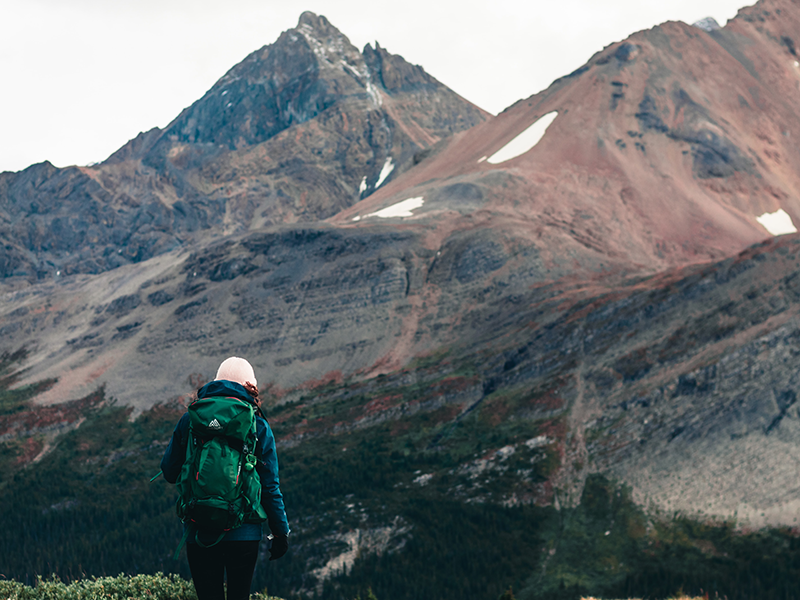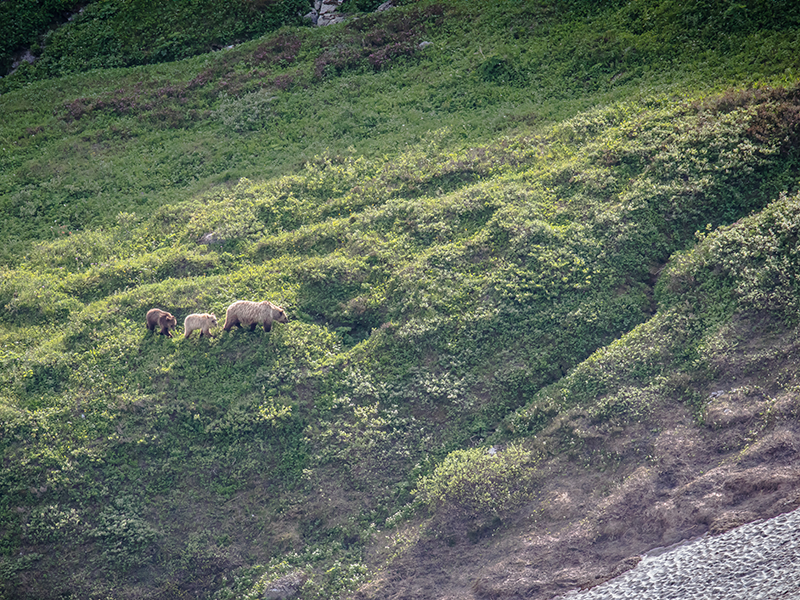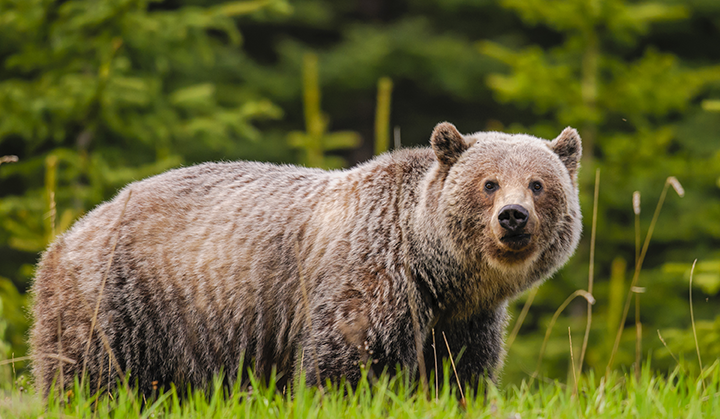The B.C. government needs to get a grip on grizzly bear management before it’s too late. You can help.
The province of British Columbia has some of the greatest diversity of plants and animals in Canada.
Grizzly bears (Ursus arctos horribilis) are part of the big web of living beings that call this special place home. This important species is not only iconic of B.C.’s vast wild places and important for understanding landscape health, it is also meaningful culturally and spiritually for many Indigenous Peoples.
Around 15,000 grizzly bears live in their natural habitat in B.C. Incredibly, this makes up nearly a quarter of the entire grizzly bear population in North America!

However, grizzly bears are still faced with many threats; from habitat loss, to roads slicing through their key food foraging areas and movement corridors, to the effects of climate change, it’s critical that we implement actions today that will help grizzly bears survive and thrive far into the future.
An opportunity unfulfilled
In 2017, the Auditor General of British Columbia released the report, An Independent Audit of Grizzly Bear Management, to provide guidance on and support government efforts to conserve the province’s grizzly bear populations.
While some steps have been taken to address the audit’s recommendations, including the creation of new ministries to address these issues, we are still waiting for meaningful action from the provincial government almost four years later.
In 2017, B.C.’s Auditor General made recommendations about the province’s grizzly bears in a detailed report. Today, we’re still waiting for action.
Commitments yet to be fulfilled include identifying and securing key grizzly bear habitats and the implementation of a new grizzly bear management plan.
Grizzly bears and B.C.’s wild places need your voice, now.
#BearsOfBC need connected, protected wild spaces
Grizzly bears need especially large and intact landscapes so they can find food, mates and places to den over the winter.
Helping grizzly bears stay connected and protected across landscapes is at the heart of Y2Y’s work. One reason is because grizzly bears are widely considered an “umbrella” species. In other words, keeping grizzly bears healthy also helps other species of plants and animals around them.
If we can sustain grizzly bears on a given landscape, this helps keep up to 16 other large and medium-sized mammals in the same places, too.

Ideally, grizzly bears need to move across these landscapes with minimal human disturbance; but with growing human populations, more people entering B.C.’s backcountry, and widespread industrial development, this is a difficult feat.
Grizzly bears live in close proximity to humans – this is what makes living and visiting B.C. so incredibly unique.
But this is why some researchers refer to grizzly bears as a “conservation-reliant species”: a species persistently at risk from threats and requires continuous management to maintain population levels.
The message is loud and clear: the B.C. government needs to get a grip on grizzly bear management before it’s too late.
B.C.’s Upper Columbia is the “motherlode” of grizzly bears
Fortunately, grizzly bear populations are still healthy in many parts of B.C. The Upper Columbia region in the southeastern part of the province is one of those places – helping keep grizzly bears connected across the massive Yellowstone-to-Yukon region.
Because the lands in southeastern B.C. are still relatively wild and there are adequate food sources – including kokanee salmon and huckleberries – the Upper Columbia River basin has ideal habitat for grizzly bears. This area is also a key corridor for grizzly bear movement to the north and south. Keeping the bears that live in B.C. thriving helps other neighboring grizzly bears in the northern United States.
Learn more in our video about the motherlode of grizzly bears in the Upper Columbia, and how you can help keep them around for generations to come:
Government action for grizzly bear habitat is needed now
The 2017 government report itself states that “ensuring healthy grizzly bear populations throughout B.C. is only possible if government is able to provide secure habitat for this species.”
So, what’s taking so long?
We don’t need to wait until grizzly bears start disappearing from the wild. That’s why we are calling on the government to prioritize the implementation of a new grizzly bear management plan and take proactive action before it’s too late.
These important measures must be taken to protect key grizzly bear habitat while planning takes place:
- Protect areas that contain key food sources for grizzlies – in the Upper Columbia region, this includes seasonal closures where huckleberries grow abundantly and where humans have access, as well as closing some resource roads to ensure prime habitat is secure.
- Stop threats to grizzly bear habitat connectivity – enact a moratorium on any new commercial recreation tenures until planning is completed and new regulations are in place.
We need your help to show B.C.’s decision-makers how important this is – not only for this special species, but for people, too. We need you to be a voice for grizzly bears in B.C., for the wild places you know and love.
Be a voice for this special species
We can’t leave the health of grizzly bear populations in B.C. to chance; now is the time to take actions to protect grizzly bear habitat, so they can thrive far into the future.
Sign our petition to take action for grizzly bears and wild places in B.C.
Further reading and information
- More about the Upper Columbia region
- Proctor et al. (2020) Effects of roads and motorized human access on grizzly bear populations in British Columbia and Alberta, Canada. BioOne. https://doi.org/10.2192/URSUS-D-18-00016.2
- Y2Y project – Roads and wildlife: A deadly mix in B.C.’s Elk Valley


